Maniwa Fermentation’s: Community Empowerment through Fermentation
Jan 14,2021
Maniwa Fermentation’s: Community Empowerment through Fermentation
Jan 14,2021


Maniwa, Okayama, is known for the Hiruzen Highlands and its thriving dairy industry. Enclosed by mountains, the area is admired for its abundant water resources, as moderately hard water from the Bitchu River flows into the soft water of the Asahi River, one of the prefecture’s three major rivers. Because the region is blessed with pristine water and air, the saké brewing industry once flourished here, but over the years the number of breweries has dwindled. In the Taisho period (1912 to 1926), there were 20 saké breweries, but only two remain today.
Maniwa Haccos, a team made up of fermentation businesses operating in Maniwa, was launched in response to the decline in saké breweries with the goal of reviving the local community. We spoke with Kono Naoki, who serves as the representative for Maniwa Haccos, about the team’s initiatives and the future they are aiming for.
More people are considering moving to the countryside, one observable sign that the trend of overconcentration in large urban centers is gradually reversing. Maniwa, too, has seen people leaving its city core in recent years.
Kono, a long-time resident of Maniwa and a fifth-generation descendent of the founder of the Kono Vinegar & Miso Manufacturing Factory, weighed the city’s future in the face of its waning industry.
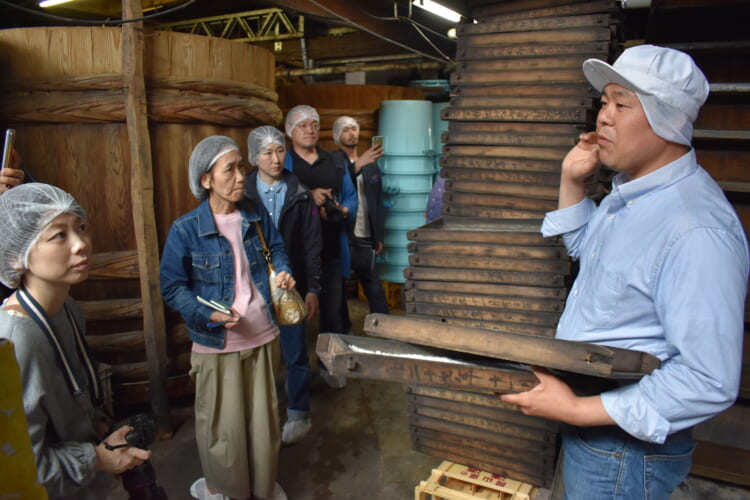
Kono Naoki, a fifth-generation descendent of the founder of the Kono Vinegar & Miso Manufacturing Factory
“Our delicious water makes Maniwa the ideal city for the saké brewing industry. I’ve heard stories that in the past, vast amounts of saké, as well as soy sauce and miso, were produced here, but the numbers today have fallen off drastically. If things were to stay the same, the city would become desolate, so I knew I had to do something about it.”
Seemingly overnight, only a few soy sauce producers were left, including the Kono Vinegar & Miso Manufacturing Factory, which since its founding in 1888 has made its products here taking advantage of the climate and the rich underground water sources.
Kono got together with some old acquaintances to discuss the matter. As they pondered the future of Maniwa over glasses of saké, they suddenly had a realization. All the people present had one thing in common: fermentation. Moreover, many jobs in Maniwa are related to fermentation.
“There are, in fact, ten businesses in Maniwa engaged in fermentation … Japanese saké, wine, cheese, bread … At a glance, you might think these businesses have no common ground, as they are in different industries, but when viewed through the lens of fermentation, you can see big connection linking them all.”
Maniwa is a city that lives and breathes fermentation. If Maniwa were to lean into this image, fermentation could become a new attraction for the city. In response to this rallying cry from Kono, business leaders from different industries came together to form Maniwa Haccos.
Since its formation in 2012, Maniwa Haccos has planned and run events where people enjoy fermented foods while listening to live music by local Maniwa artists and organized tie-ups with local restaurants. The team’s latest project is Maniwa Fermentation Tourism, a registration-based tour operated by the Maniwa Tourism Bureau, a local tourism organization.
The original plan called for tour participants to visit the city in person, but because of the COVID-19 pandemic, the tours moved online. Since the first tour in November 2020, the online tours have continued under the banner of experiencing Western spirits made in the Japanese countryside.
The only requirement to join an online tour is to have access to the Internet and online videoconferencing tools. To register, all you need to do is purchase the tour-limited Exclusive Fermentation Assortment Pack from their webstore.
On the tour day, participants tour each atelier and production process online while enjoying the assortment pack delivered in advance at home. The current Exclusive Fermentation Assortment Pack contains the products described below.
— Sanza Rosé
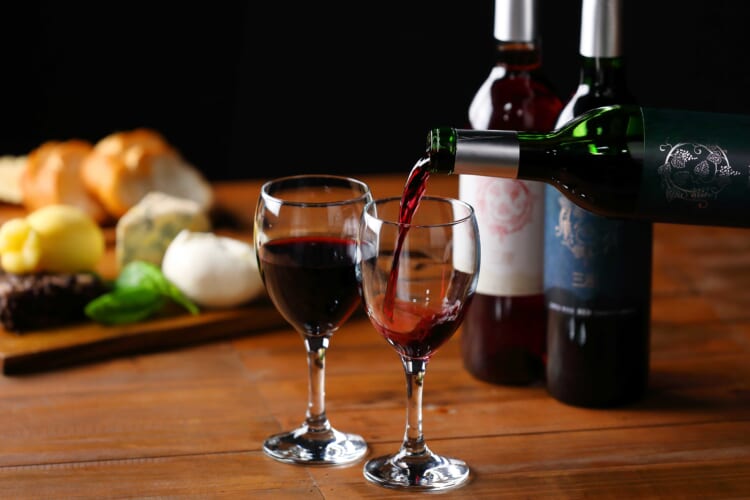
Sanza Rosé is the pride of the Hiruzen Winery, which is operated by the agricultural corporation Hiruzen Wine. The wine is made from the berries of the crimson glory vine cultivated in the magnificent nature and cold climate of the Hiruzen Highlands.
— Sakekasu Special Ale
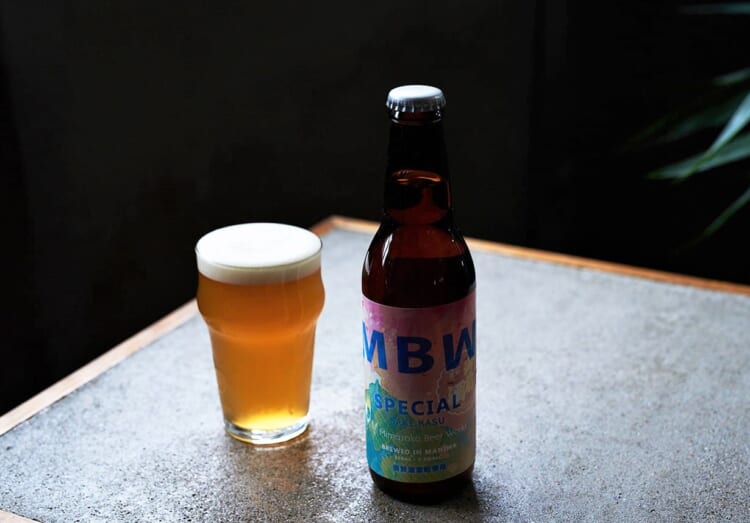
Sakekasu Special Ale is a high-alcohol-content beer from Mimasaka Beer Works made with the sakekasu [saké lees] of junmai daiginjo [top-quality saké made from only rice] produced by Tsuji Honten’s Gozenshu Brewery. Sakekasu Special Ale lets you enjoy the aroma and richness of the saké lees together with the deep flavor originating from the fermentation process.
— Pione Grape & Hibiscus Ale
Pione Grape & Hibiscus Ale is a beer created in the image of a wine using Pione grapes. It provides the aroma of the grapes with the acidity and sweetness contributed by the hibiscus flowers.
— Tomino Fresco Cranberry
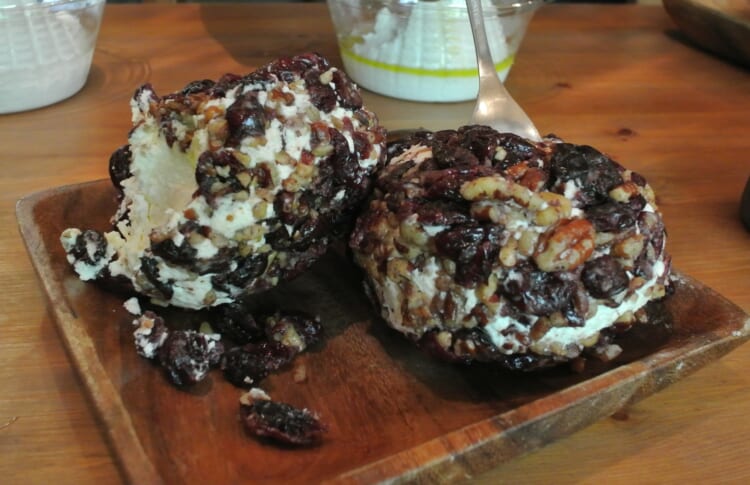
Tomino Fresco Cranberry from the cheese atelier Il Ricottaro is fresh milk cheese that has been fermented slowly for 24 hours. It has a refreshing palate and yet is oddly rich at the same time. Normally, lots of cranberries are used, but fewer were used for this assortment to pair better with wine.
— Yuzu Koji

Yuzu Koji is a handmade yuzu miso [Japanese citrus-flavored miso] that features ripe, slowly artisan-simmered Japanese yuzu with handmade koji to bring out a refreshing yuzu aroma. The assortment pack includes recipes to pair Yuzu Koji with saké.
The online tour consists of two parts. The first part was an online tour of Mimasaka Beer Works and the Hiruzen Winery, taking in the workplaces and production processes of each business.
Watching the participants found some hurriedly preparing snacks and others opening their bottles of Sanza Rosé without delay. Perhaps it was being connected online from home that allowed people to relax and be themselves as they enjoyed the tour.
Following introductory greetings by Kono, Miura Hiroshi from Mimasaka Beer Works appeared. After studying microbiology at Yamaguchi University, Miura researched yeast while working at a local bakery, which led him down the path to beer brewing.
Miura explained his commitment to creating the optimal living conditions for yeast so they will draw out the deliciousness in his beer.
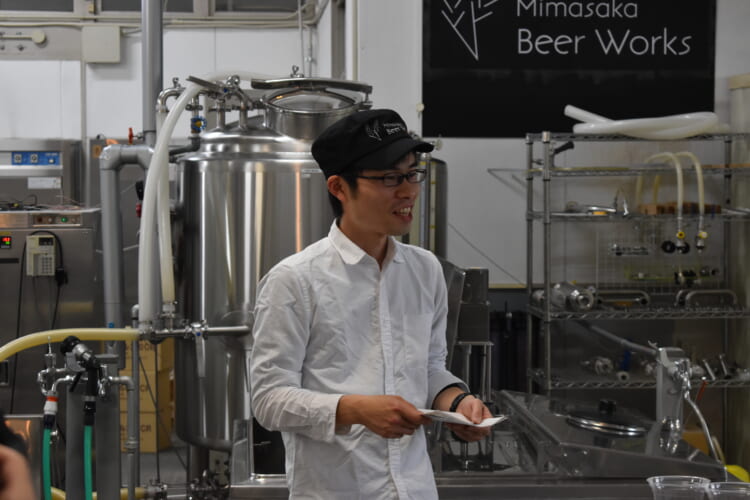
Miura Hiroshi from Mimasaka Beer Works
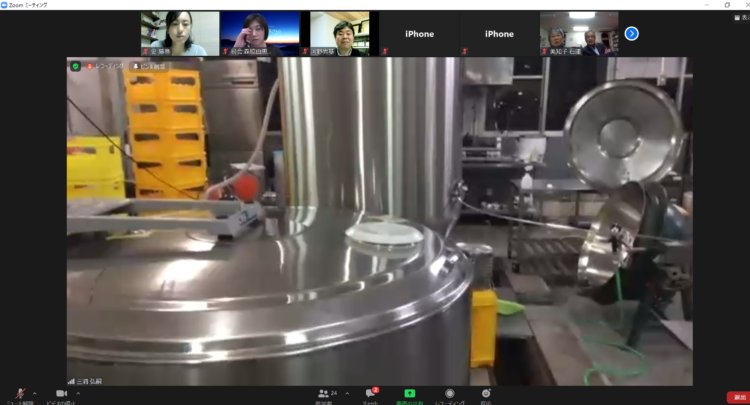
The camera even went into the tanks where beer is being prepared. When the camera zoomed in on the beer bubbling as it fermented, the participants leaned toward their screens to fully drink in this special one-off experience.
Hiruzen Winery showed a video of its wine-making process using berries from crimson glory vines that grow wild in Hiruzen. The crimson glory vine is a species endemic to Japan and is rarely used to make wine due to the level of difficulty. The winery spent 10 years selecting and cultivating wild crimson glory vines with high sugar content and low acidity and has been exploring new possibilities for wine made from the berries of crimson glory vines.
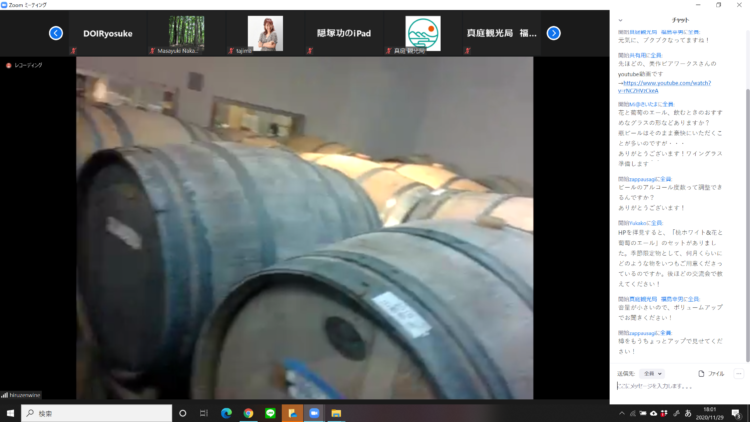
During the online tour, participants used the chat function to share information and impressions
Crimson glory vine berries have different flavors depending on the year’s climate and the weather conditions during harvest time, so no two wines will have the same taste. Moreover, the finished wine varies slightly depending on the individual characteristics of the barrels. Learning this, the participants’ interest only heightened in the barrels lined up in the winery’s storeroom. And with this, Part 1 of the tour came to an end.
Part 2 kicked off with a toast of Pione Grape & Hibiscus Ale and then an Q&A session between the producer and the participants. The participants in the chat expressed their admiration of the Pione’s sweet aroma and the foaminess that gave a sense of fermentation’s power.
This was followed by a delightful time where the participants listened to stories from the producers while they drank beer and wine and tasted the cheese that was universally praised as delicious. Some participants showed off simple snacks that matched the Sanza Rosé included in the assortment pack and others reported on snacks they had made with Yuzu Koji. The hour passed by in a flash.
Maniwa Haccos promotes collaborations among its members in addition to holding events like Maniwa Fermentation Tourism.
The last thing Kono showed us was red vinegar made with well-aged saké lees. Red vinegar has been used since the Edo period (1603 to 1868), but today it is a very precious commodity that is rarely produced because of the time required. Kono collaborated with Tsuji Soichiro, the seventh-generation owner of Tsuji Honten and member of Maniwa Haccos, to produce the red vinegar, arranging it for better usability and naming it kasuzu [vinegar made from saké lees].
“Our job is to pass on good things, like this kasuzu, to future generations. I hope Maniwa Haccos will foster connections between people, much like fermentation deepens aroma and umami flavor. Looking to the future, I would be delighted if our children’s generation and grandchildren’s generation carry on our fermentation businesses and make our city prosperous.”
Maniwa Tourism Bureau’s official website
Maniwa Haccos Facebook page